Demolition is moving along at 450 Union Street, the site of an eight-story mixed-use building in Gowanus, Brooklyn. Designed by BKSK Architects and developed by Pilot Real Estate Group, the 100-foot-tall structure will span 68,999 square feet and yield 24 condominium units spread across 25,500 square feet, 43,499 square feet of commercial space on the first two stories, and a 30-foot-long rear yard. Candid Demolition is the demolition contractor for the property, which is located at the corner of Union and Bond Streets.
Recent photographs show the former Green Building razed to street level and crews in the midst of clearing its remaining rubble. Demolition has yet to commence on the one-story property on the eastern end of the lot.
The Green Building, shown in the below Google Street View image prior to its demolition, dated back to the late 19th century and served as the home of a range of companies including Cement Drain and Water Pipes Company, John Hynes Granite works, and Atlantic Ice Company, which all took advantage of its proximity to the Gowanus Canal’s waterway access. It was later occupied by the Thomas Paulson & Son brass foundry from 1931 until 1994. Proposals for its demolition first emerged in 2002, but were denied. In 2008, 450 Union Street was renovated into an indoor-outdoor event space that spanned more the 6,000 square feet with a reception room, a courtyard, and a private lounge.
No official renderings or construction timeline for 450 Union Street have been revealed. The closest subway from the property is the R train at the Union Street station a few blocks to the east.
Demolition is expected to be finished in June, as noted on the information board.
Subscribe to YIMBY’s daily e-mail
Follow YIMBYgram for real-time photo updates
Like YIMBY on Facebook
Follow YIMBY’s Twitter for the latest in YIMBYnews

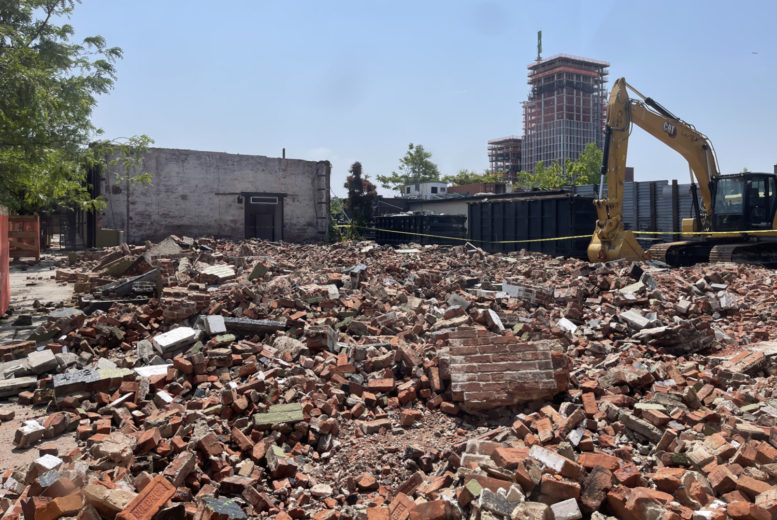
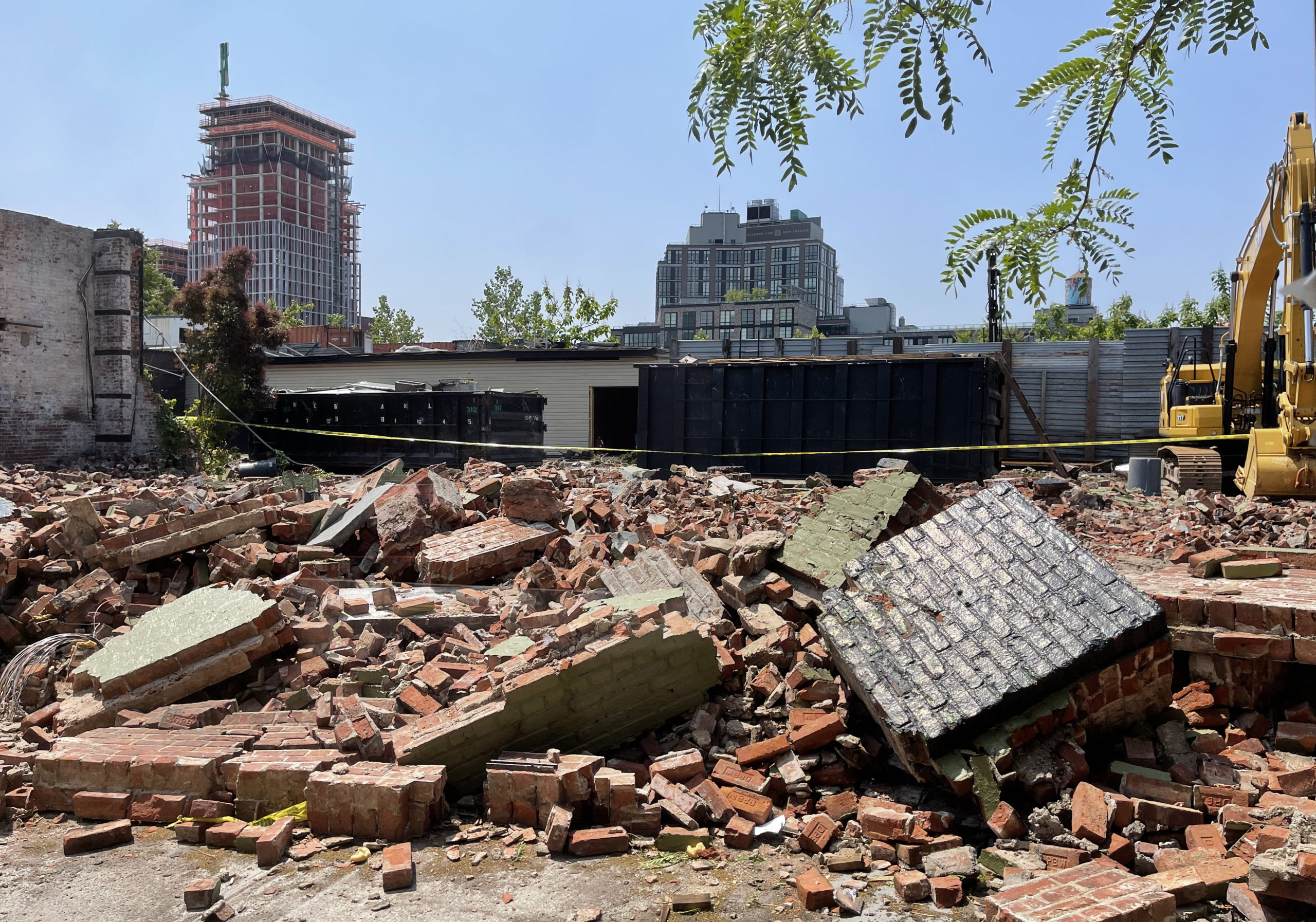
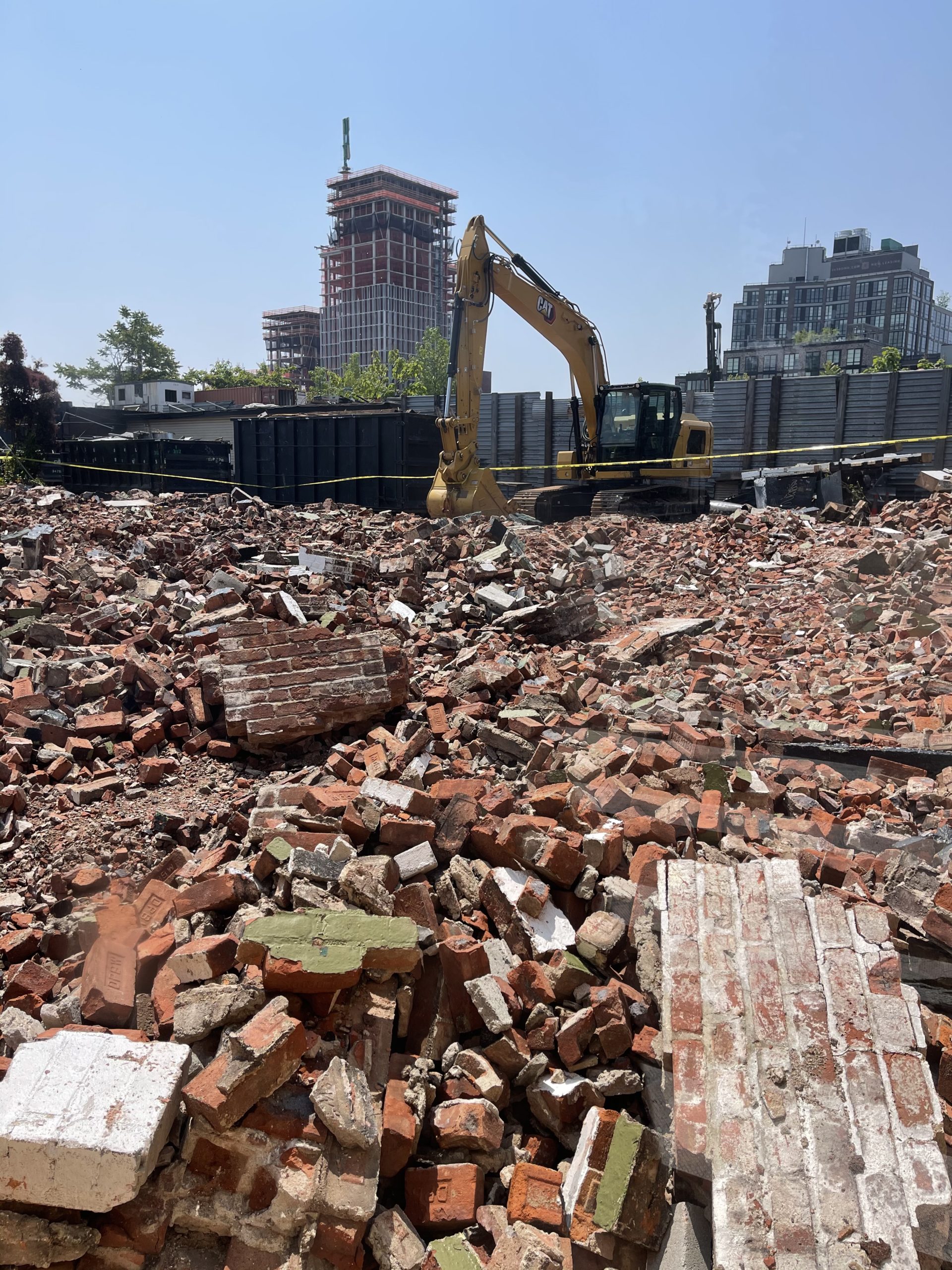
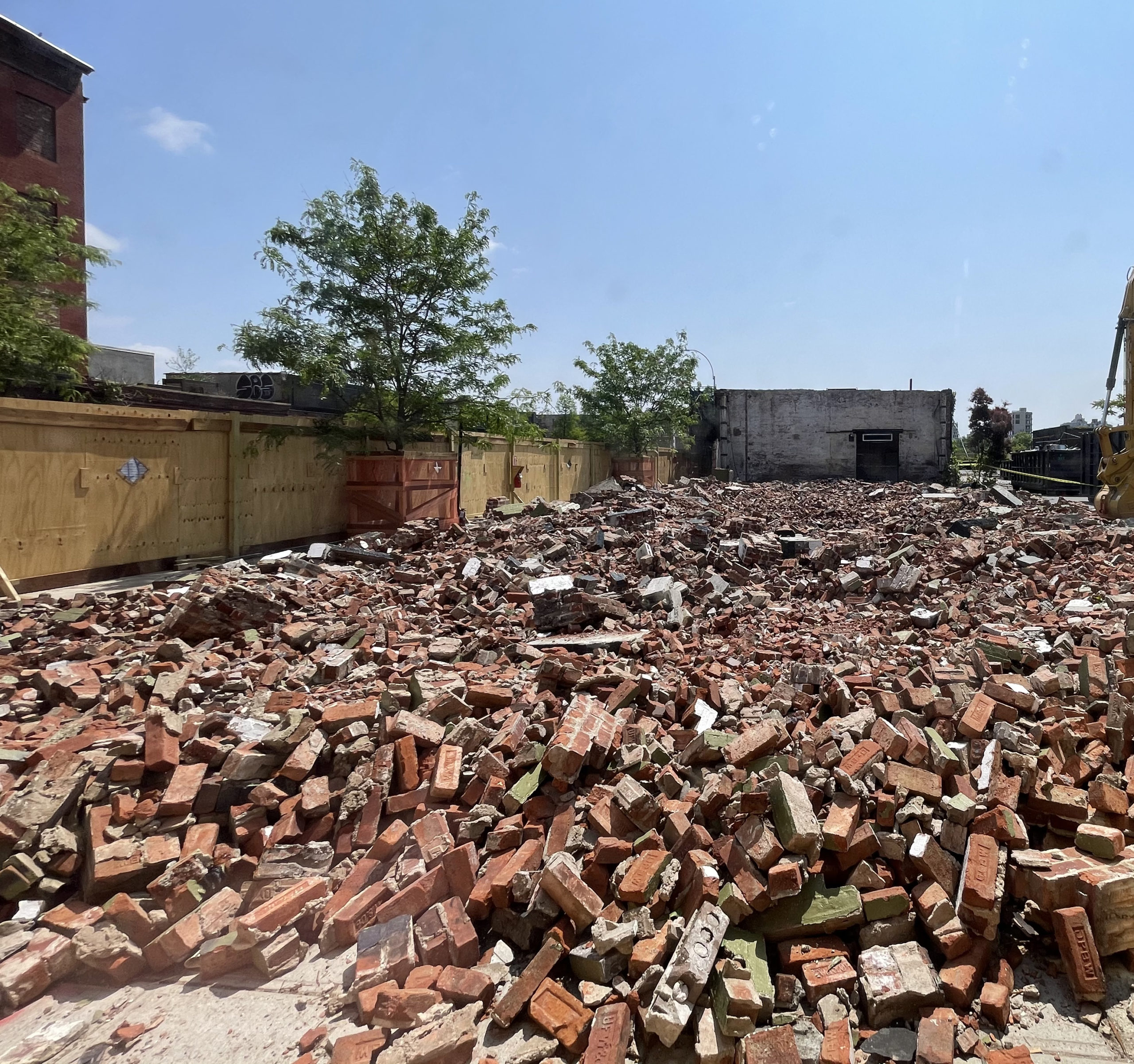
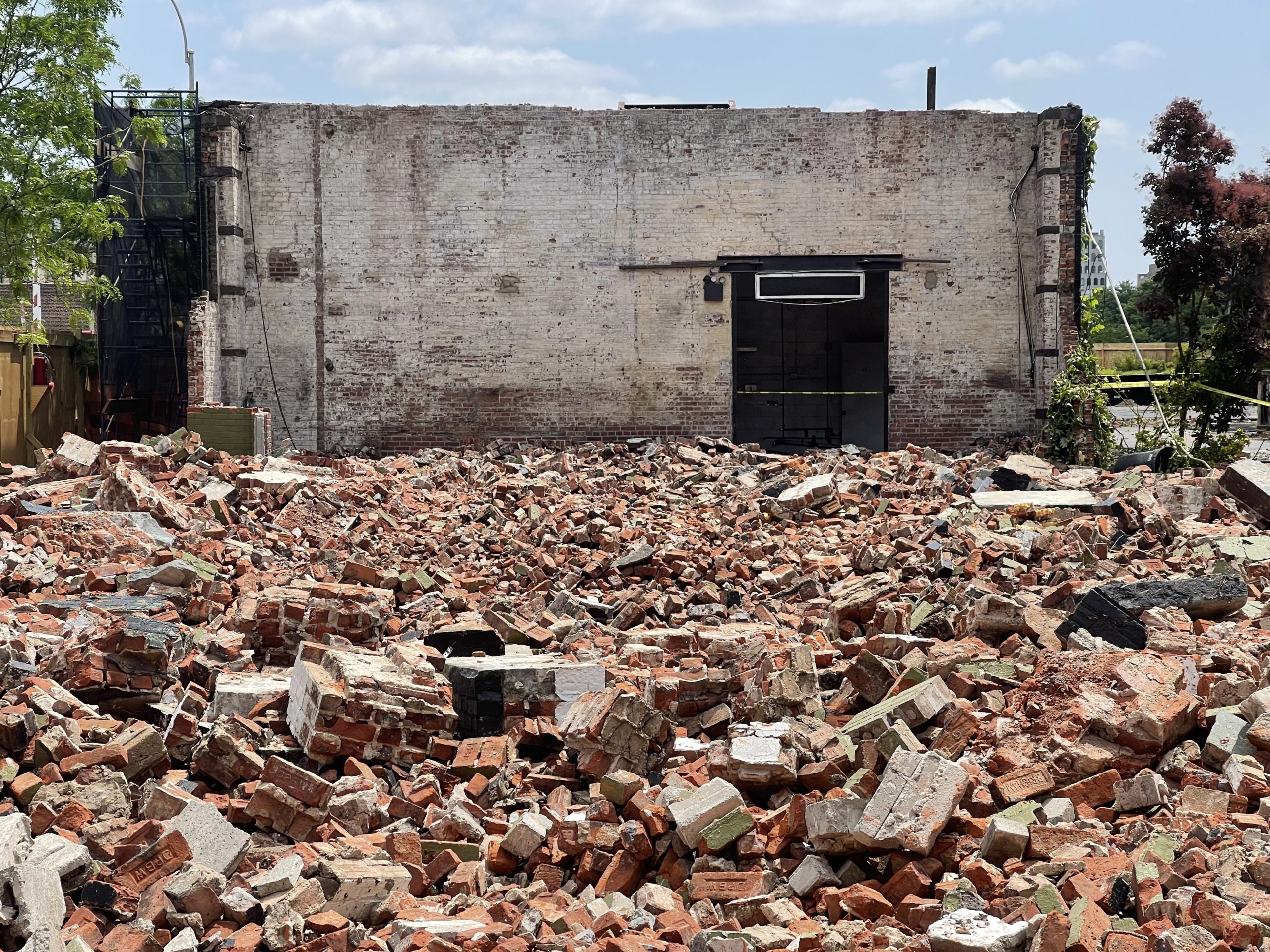
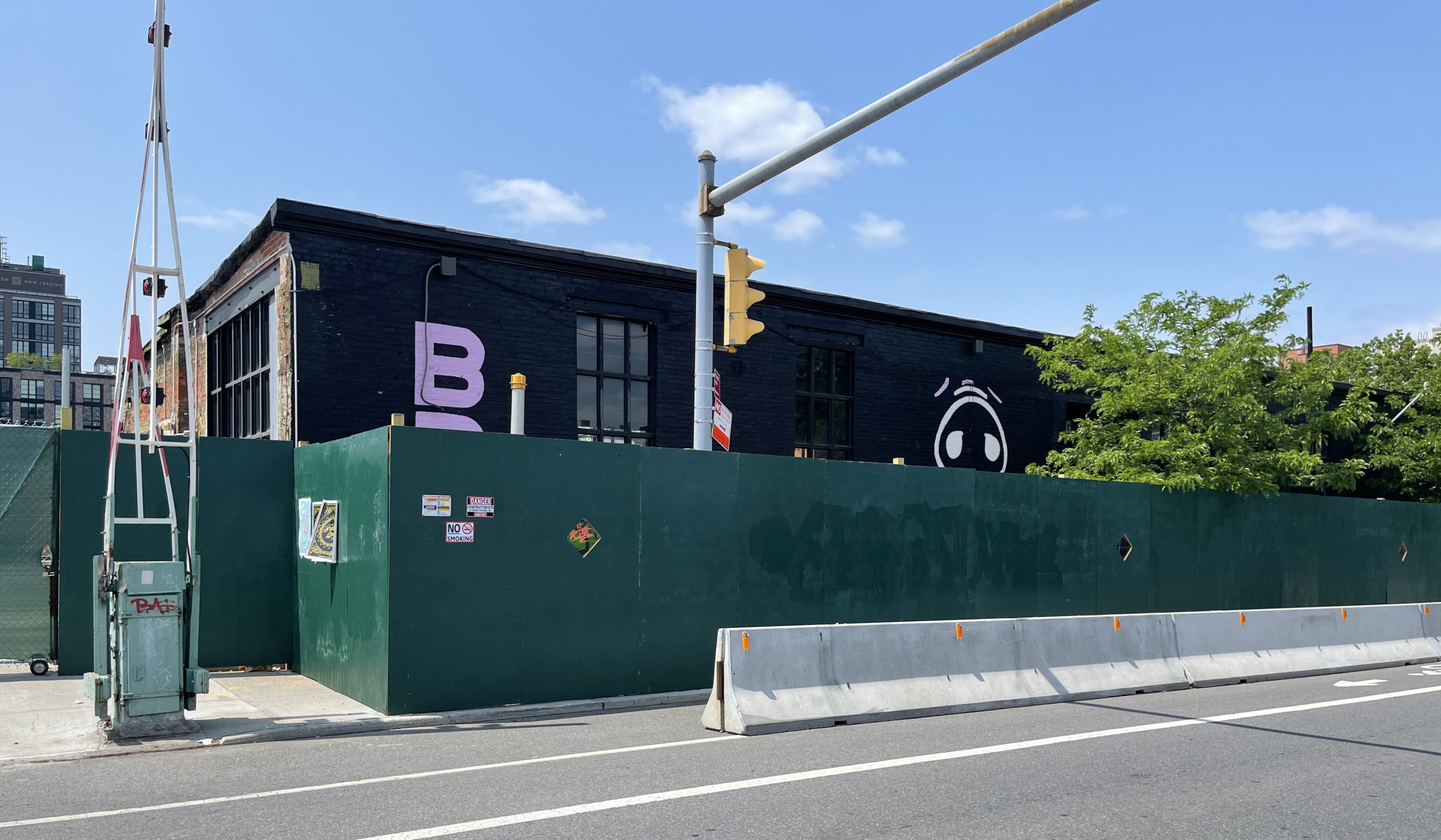
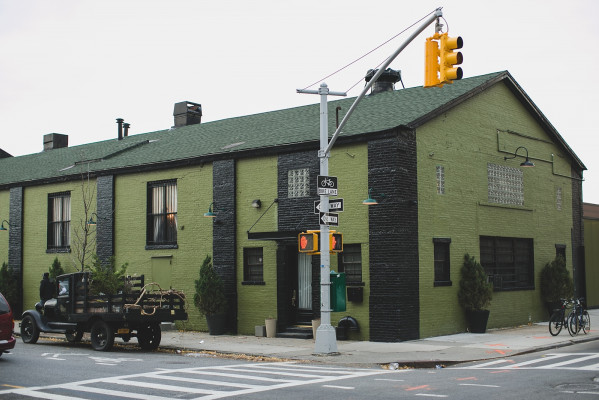

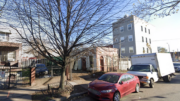


so sad they demolished
The Green Building, shown in the below Google Street View image prior to its demolition, dated back to the late 19th century and served as the home of a range of companies including Cement Drain and Water Pipes Company, John Hynes Granite works, and Atlantic Ice Company, which all took advantage of its proximity to the Gowanus Canal’s waterway access. It was later occupied by the Thomas Paulson & Son brass foundry from 1931 until 1994. Proposals for its demolition first emerged in 2002, but were denied. In 2008, 450 Union Street was renovated into an indoor-outdoor event space that spanned more the 6,000 square feet with a reception room, a courtyard, and a private lounge.
And like what exactly is the point of copying and pasting the exact same text in the article to your comment? People can read the same words above before scrolling down to the comments, and seeing your obscenely long text on the Gowanus Canal
Hey James ,
Do you have anything of value to add to the conversation or do you just want to post personal comments about the way I post?
Do you have any thoughts or factual comments about the disastrous rezoning of Gowanus by DeBlasio and Brad Lander?
Do you have anything else to say and add to your.
“conversation” that literally just copied and pasted a paragraph from the article?
Gowanus 101
What’s Happening in Gowanus?
The Canal
The Gowanus Canal Was Designated a “Superfund Site”
For over a century, the banks of the Gowanus Canal were line with industry and manufacturing companies, which released their toxic waste into the canal water as well into the ground. In 2010, the federal government identified the Gowanus Canal as one of the most toxic waterways in the entire country. It’s filled with toxins that pose serious public health risks. As a result, it was designated a “Superfund” site, and in 2020, the Environmental Protection Agency began a $1.5 billion cleanup of the canal.
The Land
The Gowanus Neighborhood Has Been Rezoned
In 2021, 82 blocks in Gowanus were changed from mainly industrial use to allowing residential development. The existing industrial buildings being demolished in the neighborhood will soon be replaced by dozens of apartment towers reaching up to 30 stories tall.
Most of the Rezoned Land is Highly Toxic
The vast majority of development sites in Gowanus (see map, below) are filled with cancer-causing toxins due to a century of industrial use, and have been classified by NY State as “Brownfield sites.” Some have toxins as deep as 150 feet.
The Infrastructure
Sewage Frequently Flows Into the Canal
During heavy rains, raw sewage flows into the canal because it exceeds the current sewer system’s capacity. As a result, the EPA has demanded that the City build two enormous “retention” tanks to keep excess sewage from going into the canal.
What’s The Problem?
The Land is Not Being Cleaned Up Fully, Leaving Toxins in the Soil
All of these sites need to be cleaned up before residential buildings can be built. State law requires they be cleaned to “pre-disposal conditions”—as they were before industrial poisoning. However, this is NOT happening. For instance, at some sites, where toxins reach as deep as 150 feet, the State is only calling for developers to clean less than the top 8 feet of contaminated soil.
Toxins Left in the Soil Can Enter Buildings And Threaten Future Residents’ Health
The State itself acknowledges that when certain toxins (“volatile organic compounds” or VOCs) are left in the soil, they can “move into buildings and affect the indoor air quality.”
Rather than remove them entirely, the State has decided that on the development sites, these toxins will be covered, or “capped,” with a slab of concrete. This method of dealing with toxic land, known as creating a “vapor intrusion barrier,” is very risky, and is so unreliable that these sites must be monitored every year, in perpetuity, to ensure that dangerous vapors haven’t penetrated people’s residences.
The Most Deeply-Affordable Housing Is Planned for the Most Seriously Toxic Site
Some of the worst contamination can be found at “Public Place,” a City-owned plot at the corner of Smith and Fifth Streets which for decades housed a manufactured gas plant that created waste known as “coal tar.” Exposure to coal tar has been linked to a variety of cancers. Coal tar at this site has been found to a depth of 150 feet.
The cleanup proposed for this site is woefully inadequate, and only the top 8 feet of soil will be cleaned. It is also the only site in the entire rezone where 100% of the 950 apartments target lower incomes, including units for unhoused individuals and seniors. A school has also been proposed for this site.
Placing the lowest-income residents in danger in this way raises Environmental Justice concerns.
Toxins Are Not Confined To Their Original Sites and Threaten the Health of Existing and Future Residents
Large “plumes” of migrating carcinogenic coal tar have already been found far from their original site in Gowanus, and with flooding and rising groundwater levels from climate change, these and other carcinogens can wind up underneath existing homes and intrude into them.
Fumes from the Toxic Construction Sites Pose a Danger to the Community
The disturbance of the land at these toxic construction sites has caused air monitors to be set off by toxic fumes reaching dangerously high levels, with the community not notified and only discovered after kids in the neighboring playground smelled it and reported it to our electeds.
The Gowanus Canal will be Re-Contaminated With Toxins
Without a full cleanup, toxins from the sites surrounding the canal will seep right back into the canal and re-contaminate it, thereby not only wasting $1.5 billion in taxpayer dollars, but also returning the canal to its dangerously toxic state.
Sewage Retention Tanks Are Not Being Built, and Sewage will continue to flow into the canal—and into our homes
The City is not following the EPA’s timeline to build the required retention tanks, and at this point says that they won’t be complete until after 2030. And the retention tanks are only meant to deal with the current number of residents in the community; they don’t take into account the additional sewage that will be produced by 20,000 planned future residents.
Without the required retention tanks, and given increases in rainfall as a result of climate change, sewage will (and has) backed up into people’s homes.
NY Post
State environmental officials waited nearly two years to alert the public that cancer-causing vapors over 20 times the amount considered safe escaped from polluted soil along the Gowanus Canal — and into a nearby shuffleboard club.
The Department of Environmental Conservation learned of the alarming levels of toxic vapors in March 2021 while conducting air-quality tests inside Royal Palms Shuffleboard Club — but the hipster haven remained open throughout, since the agency deemed the century-old building was “safe.”
The agency only documented the stunning finding late last year in public records buried on its website.
On Friday, DEC spokeswoman Haley Viccaro admitted to The Post that it could have done a better job alerting locals to the looming health hazard, and “are evaluating potential improvements to enhance this process and ensure this information is clear and informative of these comprehensive, science-based efforts to protect public health.”
he revelations only came to light thanks to the grassroots group Voice of Gowanus, which hired an Ithaca, N.Y.-based environmental database firm, Toxics Targeting, that recently discovered the damning DEC documents.
The records showed March 2021 air levels of the cancer-causing chemical trichloroethylene, an industrial solvent, were nearly 22 times above acceptable levels at the shuffleboard club.
“The DEC in 2021 should’ve put up signs in the club, published public notices in local papers, and sent mail alerts to people in the neighborhood,” said Walter Hang, who heads Toxics Targeting. “All they did was make obscure references in dense technical documents regular citizens wouldn’t know about or can’t decipher.”
Hynes Granite was my great-grandfather’s company. He was a stone cutter in Ireland. He had a storefront selling granite headstones in Brooklyn, then he moved into his first of two large granite yards. I understand this was his second and final site. He died young of diabetes. He employed a lot of people in his day.